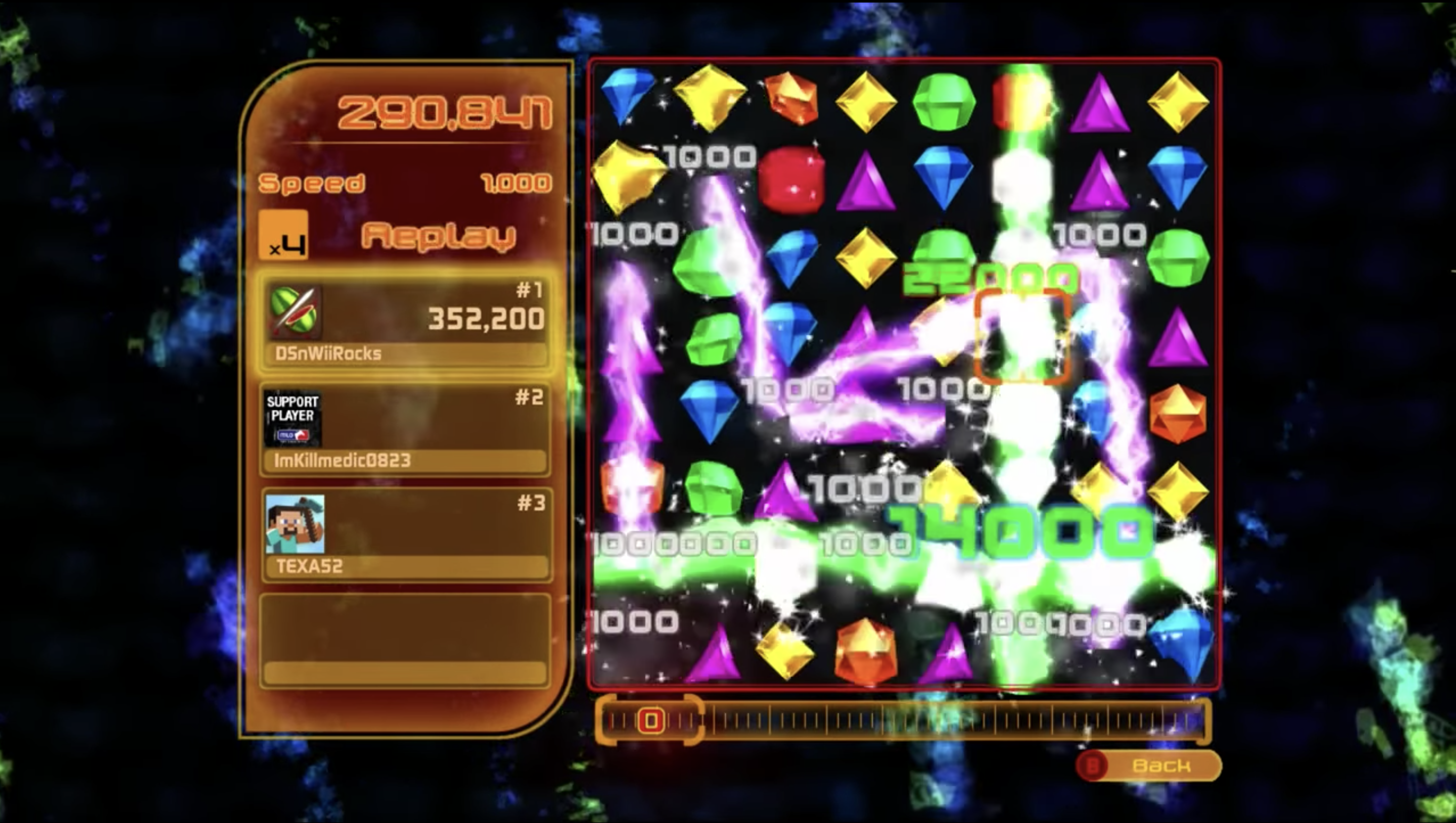

(If the Power Gem is at an edge or corner, naturally there are fewer adjacencies.) The next time that gem is part of a row, it explodes, destroying all 8 adjacent gems. It retains its color, but has added sparklies to show its potent nature.

If you make a row of 4 (or two orthogonal rows of 3 that meet at one gem), then the gem that created that row is *not* removed from the board, but instead becomes a Power Gem. These additions have a serious effect on the strategy, however! They make the game both more strategically interesting, and also much less liable to runs of bad luck - if properly exploited, of course! Bejewled 2 turns out to be less susceptible to this.īejeweled 2 is very similar to the original game, adding only two new rules. Still, a game of basic Bejeweled will still eventually have a string of bad luck and end. There are further elaborations one can make when choosing between moves of roughly equal "depth", but just the Top Down principle is alreeady enough to generate impressive scores. One only makes moves near the bottom of the board in desperation - but those moves have the largest randomizing effect, and are best saved for when the board is perilously close to zero Energy. If you always choose the "highest" available move, you are only randomizing parts of the board which are already at zero Energy, and this will tend to create more Energy in those regions. (On rare occasions, the newly falling blocks may make combos which "drill down" below the initial move.) Hence, choosing move B will tend to disrupt move A, while choosing move A has a very high chance of leaving B available as a move. Any given move will create randomizing effects in the space above it, but not usually in the space below it. Consider two moves, A and B, where A is directly above B on the board. My primary heuristic for choosing moves is "Top Down". Since there is a random element, this cannot always be done perfectly, but one can still have a strong effect on those odds. The trick in *choosing* a move is clearly to attempt to maximize the energy of the resulting board configuratiion. Hence, a randomly-chosen move will not generally tend towards a losing board, though a long enough drunkard's walk will eventually reach one. A randomly chosen move will tend to drive the board towards the median Energy of a random board (about 4?). All moves will change the board configuration, usually to one with a different Energy, greater or lesser. A randomly-chosen board configuration is very unlikely to be at zero Energy, however. A boars with zero Energy is a losing position. Let us define "Energy" as the number of available moves for a given board configuration. So, how, in practice, does one "not lose"? There are some simple heuristics, but they depend on some underlying theory. In short, the way to win can be summarized as "Don't lose." It doesn't matter how many points you score in a given move if you have an infinite supply of moves. This is because the game is, at least theoretically, infinitely extensible. There are further details about scoring, but they are not relevant to actually getting very high scores. Play continues until there are no more legal moves.

Every so often, the player "finishes a level" and the board is randomized. As a result of these falling jewels, more sets may be formed, which in turn vanish and are replaced, until the board contains no more complete sets bonus points are scored for such combos. After each move, all rows of 3 or more disappear, the jewels above the empty spaces fall down to replace them, and new random jewels are seeded in from the top to fill out the board. Moves are only valid if at least one of the jewels, in its new position, forms a row of 3 or more of the same color. A move is made by swapping two orthogonally adjacent jewels. For the few of you who haven't played, a quick overview: it is played on an 8 x 8 board, with each square containing a jewel in one of 7 different colors. The advent of Bejeweled 2 led me to revise my strategies in ways I thought interesting enough to talk about.įirst, I will discuss the original Bejeweled. Although I don't generally play when I have a lot of brainpower, I have nonetheless come up with a few useful strategies. When I am in a somewhat brainless mood, I often occupy myself by playing Bejeweled on my exo-cortex.


 0 kommentar(er)
0 kommentar(er)
